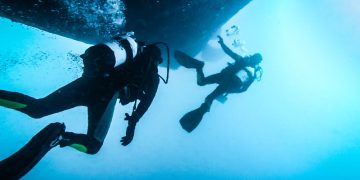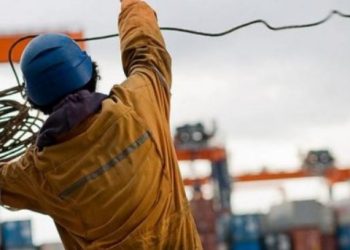During the 2025 SAFETY4SEA Manila Forum, Marlon R. Roño, President, Magsaysay People Resources Corporation & Executive Chairman, Magsaysay Maritime Corporation, gave insight on the future of the crew management industry in the Philippines which now stands at pivotal crossroads.
With a rich maritime heritage and a young population, the Philippines remains a key contributor to the global maritime workforce. However, to maintain and strengthen this position, it is essential to address systemic challenges as well as embrace innovation and enhance the welfare and development of its seafarers.
For the 2024-2025 academic year, over 113,500 students are enrolled in maritime education programs, including marine engineering and marine transportation. However, despite the important level of interest, CHED data from the 2022-2023 academic year indicates that only 16% of students, approximately 6,250, graduated and progressed to onboard training.
This gap highlights significant challenges in bridging maritime education with industry requirements. Of the 9,195 fourth-year maritime students this year, many are still awaiting training placements. Disparities in training availability are clear, with some institutions running a 2:1 cadet-to-training slot ratio, while others keep a 1:1 system.
Key barriers in seafarers’ careers
Key issues include the limited number of domestic vessels available for training, insufficient partnerships with shipping companies, high training costs and a preference among employers for experienced crew over new cadets. In addition, regulatory constraints, such as cabotage laws and manning level restrictions, further hinder access to onboard experience.
Data suggests that 64% of maritime graduates do not receive the opportunity to go onboard, while only 36% transition into seafaring roles.
Furthermore, mental health concerns continue to rise within the maritime sector. Unfortunately, suicide rates among seafarers are estimated at 15 to 20 per 100,000 annually, driven by social isolation, stress and challenging working conditions.
To sustain and enhance this status, a strategic shift is required centered on three core pillars:
- effective crew management
- empowerment through education and training and;
- integration of innovation with clear, purposeful leadership.
Crew welfare and professional development are increasingly recognized as strategic imperatives. Issues such as mental health, bullying as well as crew abandonment and legal exploitation (commonly referred to as “ambulance chasing”) continue to greatly affect seafarers.
 A recent survey revealed that 27.8% of junior crew members reported verbal abuse or bullying from their superiors, often leading to feelings of depression, hopelessness and fear. Furthermore, gender diversity in the maritime workforce remains limited, with female seafarers representing only 2% of the total and with officer shortages being a growing concern.
A recent survey revealed that 27.8% of junior crew members reported verbal abuse or bullying from their superiors, often leading to feelings of depression, hopelessness and fear. Furthermore, gender diversity in the maritime workforce remains limited, with female seafarers representing only 2% of the total and with officer shortages being a growing concern.
Technological development
Technological developments are reshaping the global maritime industry. Innovations in alternative fuels, including solar, wind and other sustainable sources have been transforming how vessels operate, with a growing emphasis on environmental compliance.
The introduction of Maritime Autonomous Surface Ships (MASS) aims to improve operational safety and reduce navigational errors. These advancements are accompanied by dynamic regulatory standards, however they require updated competencies among seafarers.
To remain competitive and future-ready, maritime training must evolve. Areas such as cybersecurity, digital operations, and autonomous systems are becoming essential components of maritime education.
Continuous professional development, accessible through digital platforms, should be prioritized to ensure seafarers have the tools to learn, monitor their health and advance their careers. However, technological progress must also preserve the human element that has traditionally defined the maritime sector.
Institutional reform
Institutional reform is also necessary, as enhancing domestic shipping capacity, improving regulatory efficiency and fostering collaboration between academic institutions and stakeholders can greatly improve the pipeline from maritime education to employment.
Special attention must be given to creating inclusive pathways into maritime careers, ensuring fair opportunities regardless of gender, geographic origin, or socioeconomic background.
Recent legislative developments can also offer potential solutions. One example is the Magna Carta of Filipino Seafarers, along with its Implementing Rules and Regulations (IRR), which provides a foundational framework for improving seafarers’ rights, welfare and professional standards.
In addition, the forthcoming 2025 rules from the Department of Migrant Workers (DMW) concerning sea-based personnel are expected to further strengthen protection and enhance industry governance.
Ultimately, the future of the crew management industry in the Philippines is a shared responsibility. Government agencies, maritime institutions, private employers and seafarers must work collaboratively to ensure the resilience and progress of the sector.
The Philippines, as a cornerstone of the global maritime workforce must not only respond to industry changes but also play a leading role in shaping its direction.
By addressing educational gaps, promoting mental well-being, embracing digital transformation and enacting forward-looking policies, the Philippines can secure a stronger, more sustainable maritime future while carrying the nation’s maritime tradition forward.
Above article has been edited from Marlon R. Roño’s presentation during the 2025 SAFETY4SEA Manila Forum.
Explore more by watching his video presentation here below
The views presented are only those of the authors and do not necessarily reflect those of SAFETY4SEA and are for information sharing and discussion purposes only.
































































